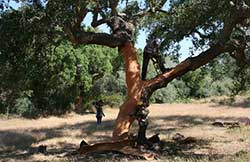I am hopeful that Portuguese wines will take off in the United States one day and I eagerly await the meteoric rise of Portugal’s great-value reds, either from a famed region like the Douro Valley or from lesser-known regions such as the Alentejo or Dão or Setúbal. My wait has been very much in the vein of Waiting for Godot, and it has been going on two decades now. I remain patiently optimistic.
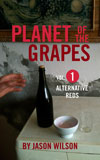
This story is an excerpt from
Planet of the Grapes Vol. 1: Alternative Reds by Jason Wilson. Smart Set Press. Get it for only $2.99 — plus check out When Wine Talk Gets Weird, a companion essay, for only 99 cents.
I’m always speaking with people who are fixated on a quixotic quest to find that “great bottle under $10.” I often get frustrated with this mythical idea of the under-$10 bottle, because it’s actually so rare to find one that offers quality and drinkability, let alone complexity. I’m almost always advocating that people bump up at least a few bucks into the $12 to $15 range. A $9.99 wine can just as easily offer bad value as a $29.99 wine can.
Portugal, however, is one big exception, one country that actually produces wines under $10 that offer honest-to-goodness value. Which is why their lack of presence in the U.S. continues to surprise me. In a 2013 poll conducted by the consumer research firm Wine Opinions, a quarter of “high-end, high-frequency” wine buyers said they “seldom” see Portuguese wines on their local store shelves, putting them on the same level of invisibility as Austrian and South African wines.
Why don’t more consumers seek out Portuguese wines? Perhaps they’re scared away from obscure grapes, such as touriga nacional, touriga franca, trincadeira, or baga. Even a grape that consumers might know, tempranillo, is called by completely different names in Portugal: tinta roriz in the north or aragonez in the south. But more likely, the lack of awareness stems from the fact that if you utter the word “Portugal” to most people, their faces go blank. “Portugal? So flying down South America way, are you?”
For me, Portuguese wine will always conjure memories of the Bedford Rascal, a ridiculously tiny sea-foam green minivan that my parents — in a clear display of insanity — rented in the summer of 1992 for a long family driving tour through Portugal. This was right after my college graduation, and how my parents — who’d never visited Europe before — settled on this itinerary still remains a mystery. They thought they’d scored a deal from a fly-by-night rental car company called something like “Joao’s.” A whole van for the price of a Fiat! The rental-car equivalent of a $9.99 wine!
It didn’t take long for the excitement to wear off. In the airport parking lot, my father scratched his head and mumbled, “This looks like a beer can on wheels.”
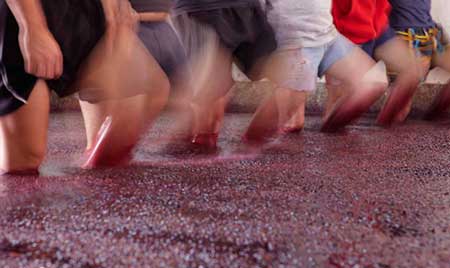
We learned some interesting things about automobile design and nomenclature from the Bedford Rascal. We learned, for instance, that it is possible to invent a vehicle that cannot comfortably seat five small-to-average-sized people and still, with a straight face, use the word “van” to refer to this vehicle. We learned that it is possible to fashion a van’s cargo area to the dimensions of Barbie’s suitcases. We learned that it is possible to invent a vehicle that has no hood, and to stash the battery, oil gauge, and other important fluids underneath the back bench seat, and still not be compelled to call this vehicle a go-cart. Finally, it is possible to equip a highway legal vehicle with a choke lever, similar to what you might find on your lawnmower at home.
For two glorious weeks, we puttered around the countryside at top speeds of 40 miles per hour. After fidgeting with the choke lever, my father realized that if he wedged the lever out in a certain fashion, we could increase our top speed to a full 45 miles per hour. The downside of this method was that the next time we tried to start the minivan, the engine would not turn over. Every morning, my brother and I would have to push my father down some type of incline to jump-start the car. Luckily, we stayed at a number of hilltop pousadas. Every day of our vacation began with my mother and youngest brother running down a steep cobblestone lane, luggage in hand, and leaping into the back of the moving Bedford Rascal.
As we left Lisbon, we slowed to pick up a hitchhiker, a cute old weathered man with a cane. But as we pulled onto the shoulder, and the man saw what he might have to ride in, he vigorously waved his arms and shooed us on our way with his cane.
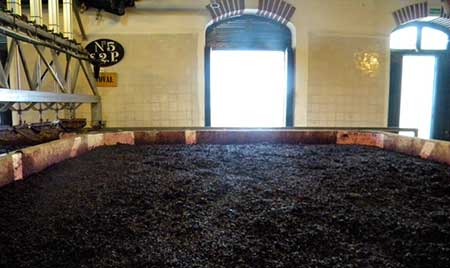
He must have known something we didn’t, because about a half hour later, as we crossed the bridge over the Tejo River, the Bedford Rascal sputtered. We had to stop in a town called Setúbal, an industrial fishing town on the coast of a peninsula south of Lisbon, because my father decided the Bedford Rascal “just needed a rest.” We decided to eat dinner, and randomly chose a traditional, tiled restaurant near the port, and entered. In 1992, we may have been the first American family of five to have ever set foot in this restaurant, and when we did, the only sounds we heard were of a soccer game on the television.
At first, the server who took our order was gruff, especially as we pantomimed and I tried out laughably bad Portuguese phrases, which I’d been learning from cassette tapes. The unsmiling owner brought over a carafe of astringent and nearly undrinkable red wine that smelled like a wet dog. With great contempt, he asked, “You are British?”
“No, no,” I said. “We’re American.”
Suddenly, something happened that I have never experienced in Europe since. Upon learning we were American, the owner’s face brightened into a big smile, and he called his wife and son over. “They’re Americans,” he said, seemingly relieved we were not part of the hordes of boozy, sunburned Brits that take over Portugal in the summer.
The whole mood quickly changed. Complimentary plates of meats and cheeses came out. The owner whisked away the carafe of cheap plonk, and his son brought over a bottle from the cellar and uncorked it for my father to taste. “Wow. Tell him this is wonderful,” said my dad, with surprise. I believe when the bill came it was about $4 a bottle.
Remember, in 1992, the only Portuguese wine most Americans knew was Mateus, the sweet fizzy rosé known for its goofy flask-shaped bottle. Mateus (which, incidentally, was Saddam Hussein’s favorite wine) accounted for almost half of the table wine exported from Portugal in the late 1980s. But what we were drinking was a far cry from Mateus.
What the owner had opened and poured for us was a bottle of Periquita, Setúbal’s most famous wine, produced by José Maria da Fonseca from mostly Castelão grapes. It’s a bottle that, 20 years later, now imported by giant Palm Bay International, is one of the most widely available Portuguese wines that you can find in the States — and one that will still only set you back around $9. On that day with my family, it was indeed wonderful: dry, tannic, smoky, dark, rustic. It was the unmistakable taste of old Europe in the glass. We drank two bottles and forgot all about the troubles of the Bedford Rascal, and then stayed the night at a nearby pousada.
To this day, I still have a soft spot for Periquita. Since that first family trip, however, I’ve traveled widely in Portugal, and I want to see more of the country’s wines available at home in the U.S. What I appreciate best about Portugal is that, unlike so many other countries, this nation has mostly stuck with their ancient, indigenous grape varieties rather than simply planting international varieties such as cabernet sauvignon and merlot.
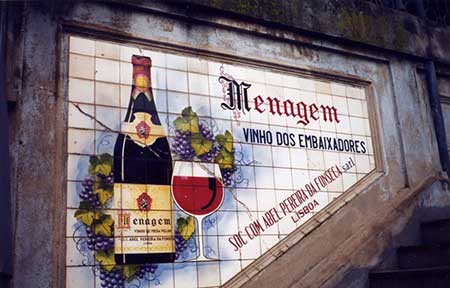
In the Douro Valley, in northern Portugal, they’ve been making port for centuries using blends of touriga nacional, touriga franca, tinta roriz, tinta barroca, and tinta cão. With port sales on a serious decline in recent decades, many Douro producers have been shifting focus to dry, non-fortified table wines. These reds, by and large, are big and full-bodied and bold, and often in need a few years of aging.
Throughout the rest of Portugal, styles can be all over the map — some bright and zingy, some dark and brooding, some oaky, some just strange — like the Baga grape, from the Beiras, in central Portugal, which can often resemble a “blueberry motor oil” like petite sirah.
But perhaps the most interesting region is the Alentejo. Meaning literally “beyond the Tagus (River),” the Alentejo is certainly not the place most people think of when they think of Portugal. Beginning a little over an hour east of Lisbon, most tourists completely overlook the plains as they pass through on their way to the Algarve beaches. By contrast, the Alentejo – the poorest, most sparsely populated part of Portugal – is a beautiful, melancholy place with blistering, sun-baked summers and chilly winters, vineyards and olive groves, castle ruins and hill towns. It’s similar to how I imagine some parts of Tuscany must have been 20 years ago, before the lip-smacking Anglo-American joie de vivre types took over.
Wine people always say that the Alentejo is Portugal’s most experimental wine region, more in line with some of Spain’s upstart regions, or New World wine regions such as Australia or South America. Much of this is based on the Alentejo’s most famous producer, Esporão, with its forward-thinking Australian winemaker David Baverstock. But if you travel the Alentejo, a different picture emerges.
The back roads of the region are lined endlessly with trees stripped bare of bark. Undressed from the branches down, dark trunks cozy up tight to the road, as if gathered together in an attempt to escape the vast openness of the sunny green and gold plains. These trees are cork oaks, and their bark has been peeled away for making wine corks. Portugal is the world’s leading supplier of cork, and the Alentejo is cork’s epicenter.
Cork takes a great deal of patience and faith to produce. A tree planted in 2013 will not be able to produce usable cork until about the year 2053. Yet thousands of new cork oaks were planted in the Alentejo during the 1990s, even as the use of non-cork closures such as screwcaps and synthetic stoppers gained momentum.
Think for a moment about a stubborn country that plans four decades ahead to grow a product which may or may be replaced in the near future by synthetic innovations. When you’ve thought for a moment about that, you will be in the right frame of mind to experience the Alentejo. And Portuguese wine in general. • 17 October 2013
| Recommendations |
DOURO VALLEYQuinta do Vallado Douro 2010 (13.5% alcohol by volume, $13) Spices and fruit, plum and cherry, anise and fennel. Very balanced, complex, and elegant for the price. Blend of touriga franca (30%), touriga nacional (25%), tinta roriz (20%), cousão (5%) and vinhas velhas (20%). Quinta do Crasto Douro 2010 (13.5%, $15) Intense, muscular, with spices and berries, and a dark chocolate finish. Blend of touriga franca, touriga nacional, tinta roriz, and tinta barroca. Churchhill’s Touriga Nacional 2009 (14.5%, $25) Blackberries and herbs. A friend described this as “like a berry from my imagination. A snozberry.” Twelve months in French oak. Fronteira Douro 2010 (13.5%, $14) Floral and fruity. “A blueberry surprise!” said one friend. Blend of touriga nacional, touriga franca, and tinta roriz. Doural Red Tinto 2011 (12.5%, $9) Duriense VR. ALENTEJO Esporão Monte Velho Tinto 2011 (14%, $10) Fresh berries and vanilla. Simple, but tasty. A blend of 40% trincadeira, 40% aragonez, and 20% castelão. Visconde de Borba Alentejo 2010 (13.5%, $9) Balanced and soft with chalky, mouth-coating tannins. Super drinkable. A blend of 30% trincadeira, 50% aragonez, and 20% castelão.
Full-bodied, rich, with ripe blackberry and with notes of cedar. Blend of aragonez, alicante bouschet, alfrocheiro.
Super-ripe black cherry, dark chocolate, and sweet oak. New World style with blend of aragonez, trincadeira, alicante bouschet, and cabernet sauvignon. 12 months in French and American oak. REST OF PORTUGAL Jose Maria de Fonseca Periquita 2009 (13%, $9) Setúbal, Portugal Dark fruit, pepper, and smoke, with rustic, drying tannins. Old Europe on the cheap. Blend of castelão (74%), trincadeira (14%), aragonez (12%). Berço do Infante Reserva 2010 (13%, $7) Lisboa, Portugal Aliança Quinta da Garrida 2009 (13.5%, $11) Dão, Portugal
Tejo, Portugal
Beiras, Portugal
Lisboa, Portugal |
